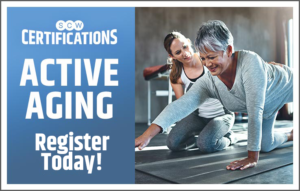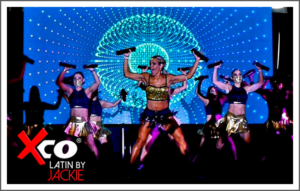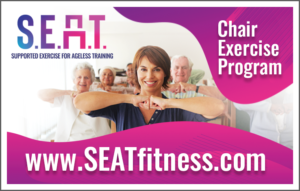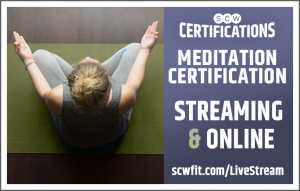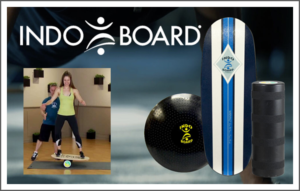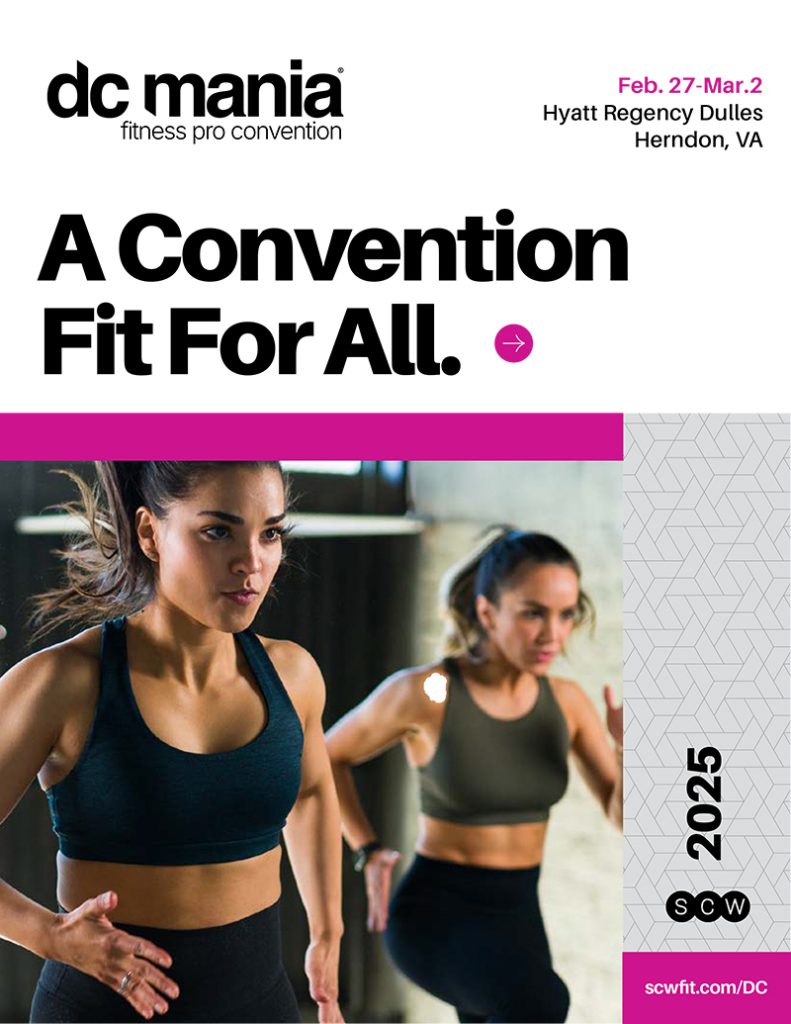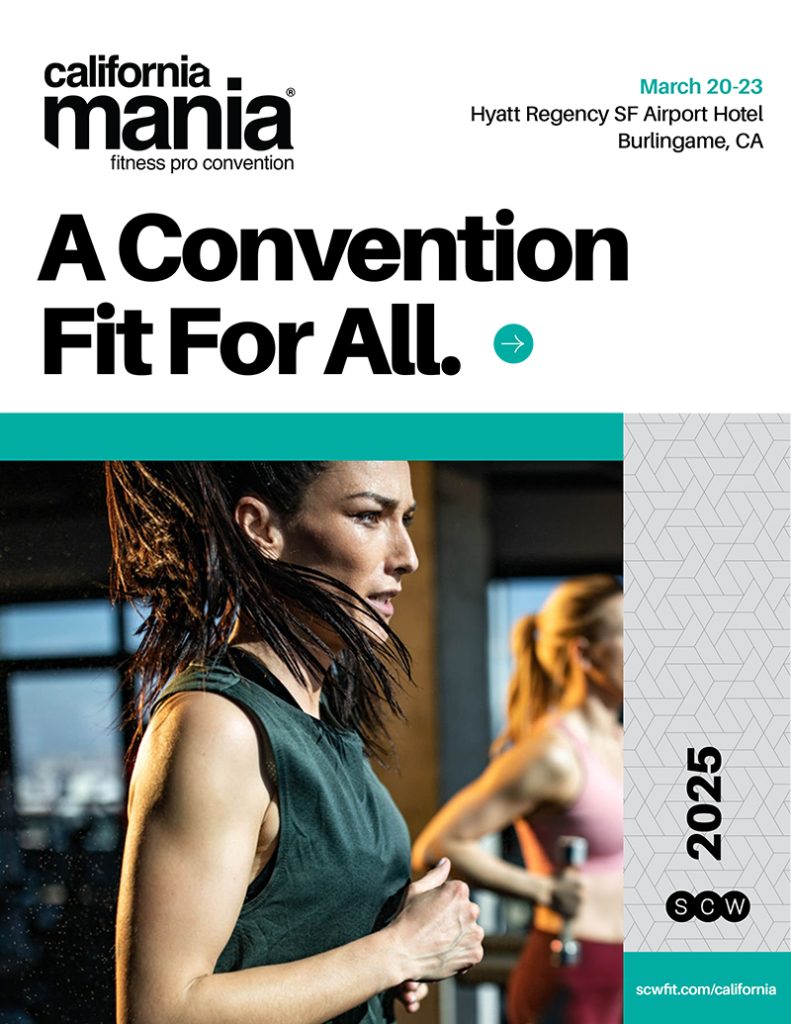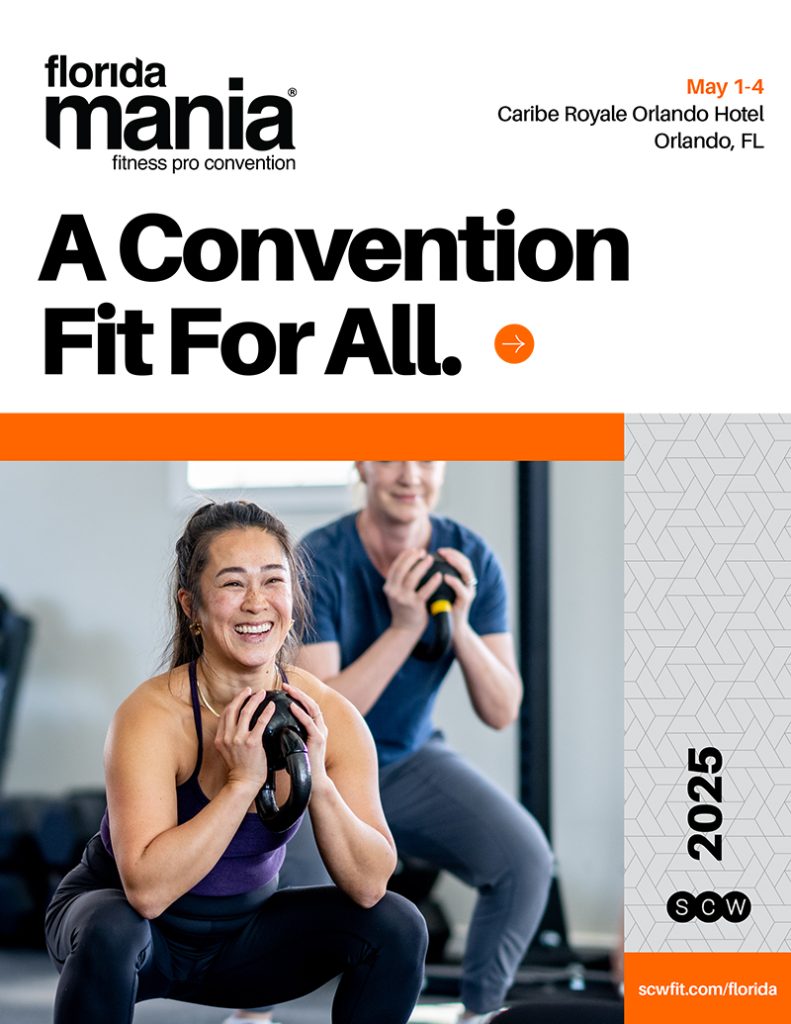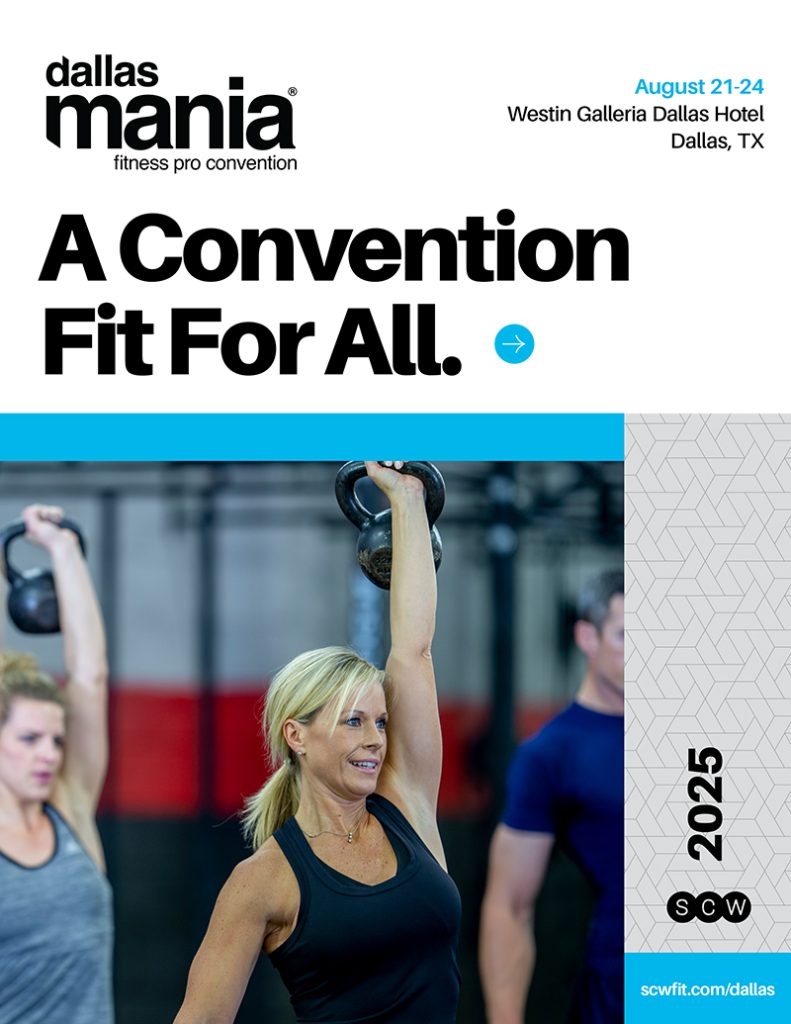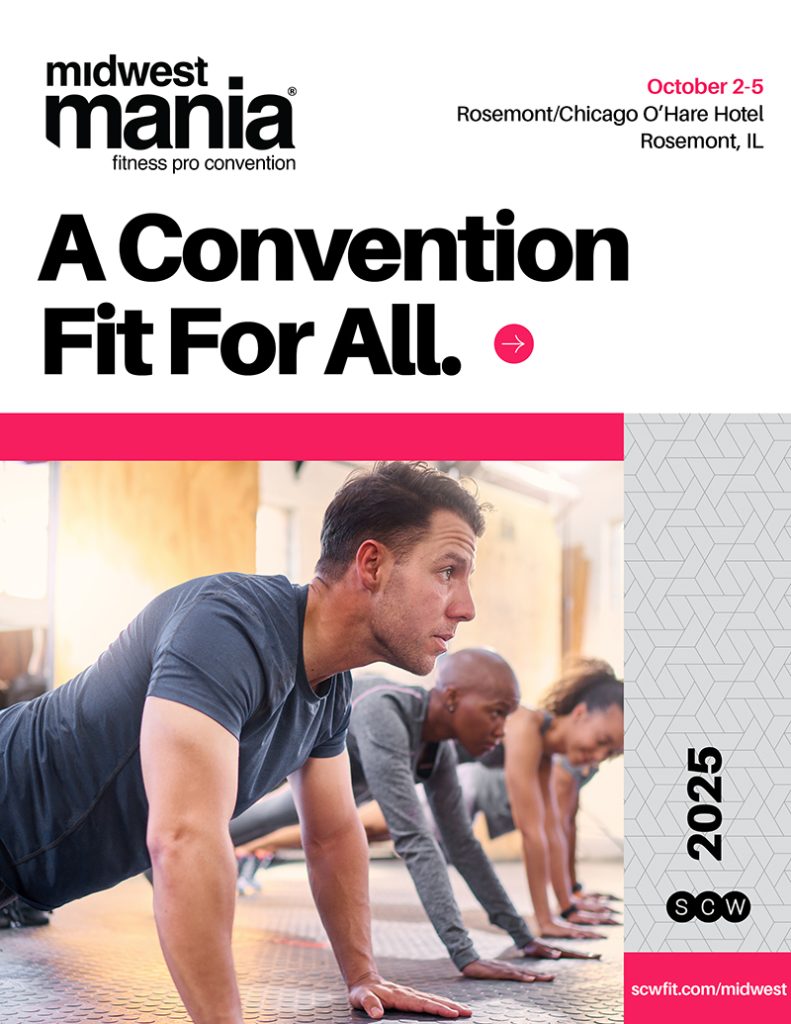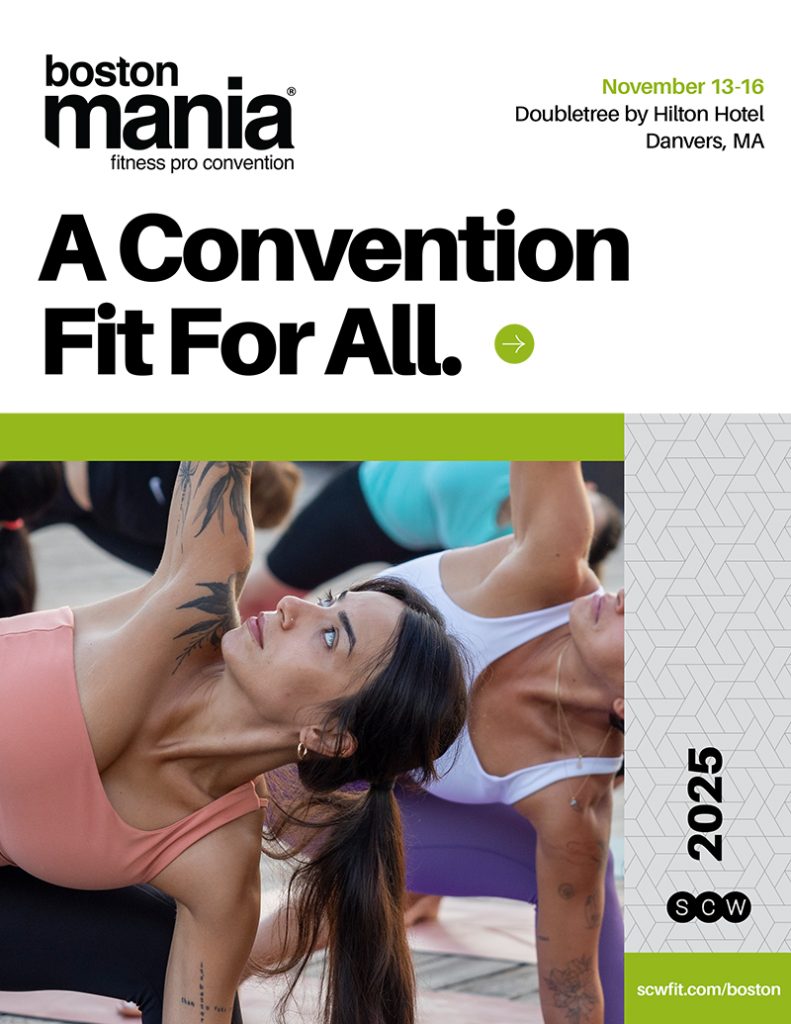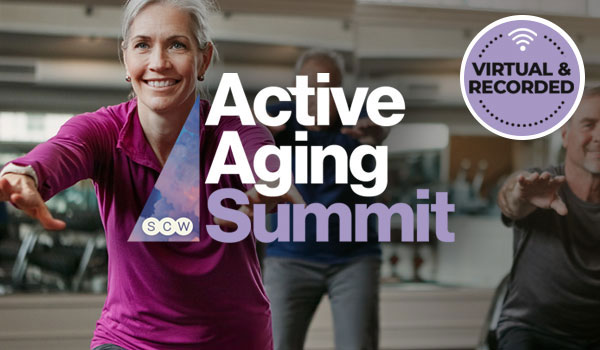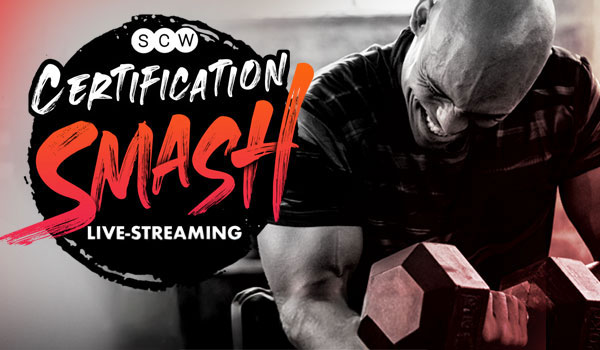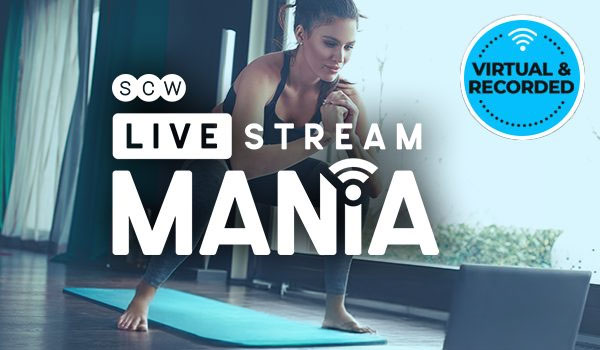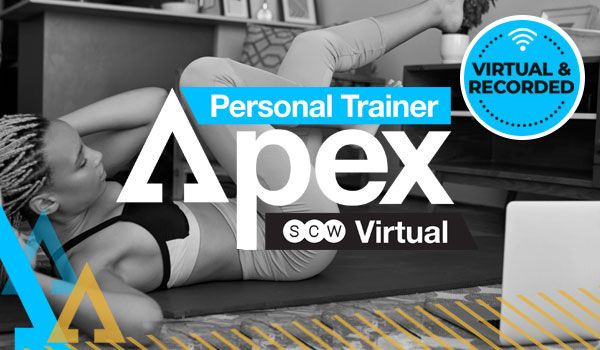
SCW Spotlite: Issue 45

Brain Power . . . Optimal Brain Aging
by Cammy Dennis
Many older adults fear their ‘brain power’ will diminish with age. This concern regarding cognitive health; the ability to think clearly, learn throughout the life span and maintain memory, is not necessarily brain health declining as a result of age, but rather due age related risk factors primarily derived from lifestyle choices, such as sedentary behaviors and poor nutrition.
According to Alzheimer’s Association, over 6.5 million Americans suffer from Alzheimer’s and by 2050, 13 million are projected to be affected. Despite these current facts, the study of brain health promises very exciting opportunities. Throughout all the research I have reviewed on cognitive health, one entity is abundantly clear, physical exercise has a very powerful, positive effect on the brain.
Just one session of moderate to vigorous aerobic activity provides a host of amazing benefits to the brain. Exercise immediately sets off a chain of events to boost brain power and increase heart rate and circulation which in turn delivers more oxygen and glucose to brain cells. This helps the brain function better with a steady supply of fuel. Aerobic exercise, performed over an extended period, has shown to increase the volume of the brain, especially in the hippocampus, which helps to regulate memory. Improved brain function translates into being able to process thoughts, solve problems, learn easier, and access recollections more efficiently. Exercise also helps to balance brain chemicals, which boost mood and increase stress threshold. Additionally, it causes brain cells to grow! Physical activity stimulates the production of BDNF (brain derived neurotropic factor) which Dr. John Raety (Author of Spark! The Revolutionary New Science of Exercise and the Brain) calls ‘miracle grow’ for brain cells. Exercise can have a profound influence on optimal brain aging.
Traditionally workouts target cardiovascular, strength and stretching exercises, but there is specific programming that can be done while moving to ‘train the brain’. Early research indicates that ‘dual-tasking’, combining cognitive and physical training, may improve mental function more so than as separate functions. In other words, task yourself with thinking, as you are moving. Choose movements that train and challenge diverse executive functioning such as, martial arts, Tai Chi, dance, and yoga.
As the fitness director for a very large active adult community, I realize the importance of providing programming that addresses the cognitive concerns of our residents. We recently launched a brand-new fitness class called “Brain Power.” This unique program promotes brain health outcomes. “Brain Power” layers cognitive challenges on top of physical exercises. For example, class participants are instructed to perform squats. As they are squatting, the instructor will call out simple words that the participants will spell backwards. The body and the brain are training together. Combining motor and cognition challenges helps boost brain cell connections.
Brain Power participants have a lot to say about this multi-functional program.
- “In other classes it’s like ‘monkey see, monkey do’ following the instructors, and my mind wanders. This class forces you to focus, pay attention and think!”
- “Brain Power feels like ‘whole health’ not just exercise for the body, but the brain too.”
- “Dementia runs in my family. I see a doctor that practices ‘functional medicine’ and Brain Power exercises are exactly what he has been encouraging me to do!”
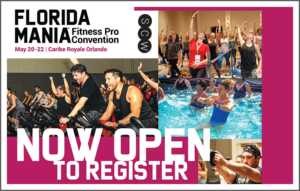
Cognitive health awareness is a must and understanding that brain function is trainable throughout the life span helps keep us aware of ourselves and surroundings. Keep in mind that the brain health outcomes stemming from ‘thinking and moving’ are derived from the process of doing so. Success is not tied to perfectly executing the Tai Chi forms, dance moves, yoga postures or cognitive challenges. Success comes from participation! Move your body and brain cells to support optimal brain aging!
Join me for three full days of exciting new research, including a session about ‘brain power’ at SCW Florida MANIA®, May 20-22, at the beautiful Caribe Royale Orlando. Registration starts at $99 and choose from over 150 workshops and lectures. Get certified to teach Active Agers or check out the new S.E.A.T. Fitness Certification designed to provide a thought-provoking workout in a chair.
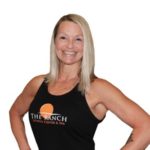
About the Author: Cammy Dennis
Cammy holds a bachelor’s degree in Business Administration and fitness certifications from ACE, AFAA, FAI and AEA and is a master trainer for NAFC. Cammy is currently the Fitness Director for On Top of the World Communities, a 55-plus active aging adult community, as well as The Ranch Fitness Center and Spa. Cammy is a presenter for the International Council on Active Aging, SCW Fitness Education and recipient of the 2019 National Association of Home Builders 55+ Lifestyle Director Silver award.

Sponsor Corner: XCO® LATIN
It’s not a WORKOUT it’s a LIFESTYLE where FUNCTIONAL training meets FUN!
The music plays, hips start moving, feet start dancing, and magic begins. XCO® LATIN, a mixture of Latin rhythms with athletic movements, draws in the crowds for the most extraordinary, intense, dynamic, and fun group fitness class on the market. Invigorate the entire body with a special emphasis on the CORE, achieving results quickly.
Becoming a certified XCO® LATIN Instructor is easy as 1, 2, 39%, & 100%.
- 1-the training is fun and dynamic
- 2-the XCO® trainer tools are one-of-a-kind
- 39%-more calories burned
- 100%-total body workout
XCO® LATIN workouts burn 39% more calories than other conventional cardio workouts and it’s all due to their highly educated instructors and the XCO® Trainer handheld aluminum tubes. With six different colored trainer sets, these aren’t your typical hand-held weights. These shakers are more like a celebration in your hand.
Jackie Rodriguez created this high energy, quick paced, music driven athletic dance program as a way to improve endurance, coordination, and rhythm. Every movement pattern educates the participant with a reason and an answer as to why they are doing what they do. As an international workout, XCO® LATIN has thousands of instructors and students.
Get your ticket to the dance party of the year! Join Jackie and her team from XCO® LATIN at SCW Florida MANIA®, May 20-22, and learn to “Move Your Core the Latin Way.” Registration starts at $99 for three full days of movement, education, workshops, shopping, and so much more. Over 150 sessions and 15 pre- and post-certifications led by world-class presenters at the beautiful Caribe Royale Orlando. For more information about XCO® LATIN by Jackie visit www.xcolatinbyjackie.com. Join in the FUN, we’ll be waiting for YOU!
 About XCO® LATIN
About XCO® LATIN
Xco Latin by Jackie© is a global licensed modality mixing Latin Rhythms with Athletic Movements Where Functional Training Meets Fun. It is the most dynamic, intense, effective, FUN and fastest growing group X in the market today. www.XcoLatinbyJackie.com

Sit and Be Fit
by Robin Taylor
Active Aging programming tops the hottest fitness trends for 2022. The 60+ population continues to grow steadily and by the year 2050, the World Health Organization estimates 22% or 2.1 billion people worldwide will fit in this demographic. As we get older our body function, daily activities, nutrition habits, and physical capabilities change, especially when it comes to balance, mobility, brain awareness, and dexterity.
As a whole, the Fitness Industry needs to focus on providing more services and programming to enhance a both mental and physical lifestyles for longevity. The best exercises recommended for Seniors and Active Agers by the Centers for Disease Control are chair yoga, resistance band/dumbbell workouts, body weight exercise, which includes walking, and water exercise. This highly regarded organization specifies a minimum of 30 minutes of moderate-intensity activity every day and muscle strength training twice a week.
SCW Fitness is excited to introduce S.E.A.T. (Supported Exercise for Ageless Training) Fitness, a chair-based workout which encompasses cardiovascular, muscular, and neuroplasticity training choreographed to uplifting, motivating music designed for either a 30- or 45- minute workout allowing the participant the perfect amount of time to feel successful.
This innovative, entertaining workout strengthens the body and mind through functional movement mixed with “brain games” and the use of lightweight strength training equipment in a group fitness class setting. S.E.A.T. was originally created as a class option for aqua workouts when the pandemic began more than two years ago and has grown and modified becoming attractive to all types of participants. Active Agers looking for low-impact exercise, those struggling with balance or mobility issues, busy individuals looking for a shorter workout in a small space, anyone easily overwhelmed with movement and directional change, and the de-conditioned or new to exercise clients can easily incorporate this program into their workout routine. S.E.A.T. Fitness is unique and perfect to teach anywhere; health clubs, retirement facilities, gyms, libraries, wellness centers, and even in conjunction with a mall walking group. This workout is exactly what facilities need when looking to serve a wider market.
The 30- or 45-minute class uses dynamic sing-along music mixed with distinctive moves to create an easy-to-follow, well-balanced exercise program, encompassing both strength and endurance. There is no need to buy fancy equipment, since S.E.A.T. Fitness only uses a chair, light dumbbells, tubing, and a small ball. Each session is broken down into eight focused tracks; Warm-Up, Posture, Cardio, Total Body & Balance, Memory, Strength, Sit to Stand, and Flexibility & Mobility. Choreography is evidence-based for functional fitness and offers inclusivity for all abilities and students.
Becoming a S.E.A.T. Instructor is easy. Either purchase an online certification and learn how to teach S.E.A.T. at your own pace or register for either a livestream or in-person certification.
The certification includes a manual with an in-depth format breakdown providing all the skills required to teach your best class. Participants will also receive a full-length demo video, color-coded choreography notes, marketing materials, downloadable music, and a theoretical exam. As a S.E.A.T. Instructor the guess work has been removed. Membership options include either a monthly fee of $9.99 or save $20 off your entire first year for a total of only $99.
S.E.A.T. Instructor Membership also includes:
- Quarterly releases (every 3 months): video, music, choreography notes & flashcards
- A private Instructor Facebook group
- Monthly educational CEC Zoom Meeting
- Monthly branded social media images, videos, and downloadable posters
- Business card templates
- Qualifies you to teach everywhere (this program doesn’t require any club licensing)
You might be wondering what sets S.E.A.T. Fitness apart from similar programs? As a turn-key program all clients “win” with general health benefits such as weight lost, improved mobility, heart health, reduced risk of chronic illness, enhanced energy levels, and improved posture, but science shows this type of workout can also improve cognitive function and increase independence. The best part is little or no prior exercise experience is needed for attendees to feel comfortable and have a great workout experience.
There has never been a better time to expand your format options. S.E.A.T. provides the missing link to those who are uncomfortable with traditional land classes. It’s designed for everyone to have fun, build confidence, and walk away with a big smile knowing they just completed a solid, cardiovascular, thought-provoking, muscle-strengthening workout.
What are you waiting for? Grab a S.E.A.T.!
For more information about S.E.A.T., visit www.seatfitness.com and register to win a Supported Exercise for Ageless Training video, music, choreography notes, social media, and marketing posters. Register today for the upcoming livestream at SCW Certification Smash, Friday, April 22, or in-person at Florida MANIA®, Sunday, May 22, at the Caribe Royale Orlando. For questions email seat@scwfit.com.
 About the Author, Robin Taylor
About the Author, Robin Taylor
Robin is the SCW Editor for Spotlite, Tidal Waves and Weekly Work-UP, as well as Assistant Product Manager for MANIA® Fitness Conventions and Team Manager for WATERinMOTION®. Having taught Aquatic Fitness for over 15 years, Robin is AEA and AFAA certified and a WATERinMOTION® Champion. She has participated in several WIM educational videos, as both a pool participant and on-deck presenter. Robin has been an employee of SCW for almost five years. She is married and has two adult daughters and has a bachelor’s degree in journalism from the University of Florida.

Hypnosis: Harnessing the Power of Thought
Have you ever been hypnotized? This question usually receives a response from people who have been officially hypnotized – maybe on stage or for therapeutic reasons. But the reality is that the hypnotic state itself is not as mystical or unusual as many people tend to believe. In fact, every night when we fall asleep, we pass through a hypnotic state, the difference is that nobody is giving us suggestions, but the brainwave activity is the same as if in a more official hypnotic trance.
Whenever we practice meditation or even just simply relax on the couch, our brain activity is slowing down from a busy beta to an alpha, or even theta state. This is where our subconscious mind is more open to suggestions. It also allows for more creativity and is easier to connect and align with our higher self and wisdom we have within.
Whatever your spiritual beliefs might be, you will most likely agree that at times you feel more resourceful than at other times. For example, your capable part might be ready to start a new diet or transition to a healthier lifestyle and then a less practical part chimes in wanting to sabotage by craving pizza, chips, or ice cream.
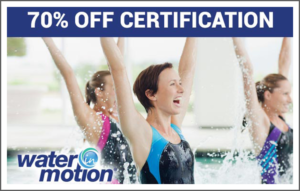
Now you can strengthen your resourceful part with hypnotherapy guided and facilitated by a Hypnotherapist, who can in turn help transform the parts that so often sabotage our goals – but there is also a lot that you can do on your own.
First, you want to become aware of your self-talk. We all have internal dialogues. What is yours like? Are you currently your own cheerleader or can you hear yourself say or think that you are not good enough or maybe even a failure? Once you have become more aware of that inner one-way conversation, it is time to think about what you want to tell yourself. Your subconscious mind is always listening, whether it is positive or negative reinforcement. This is why affirmations can be very effective. They are positive self-talk or also self-hypnosis. For these affirmations to be effective, you must believe them. Some people create beautiful affirmations and recite them every day, but if they don’t resonate within or are only phrased in future tense instead of present tense, they will create little to no change. So, it is important that you create affirmations that are realistic for you and that you believe in.
The next step is being mindful of any time where you notice negative self-talk and are able to stop that harmful train of thought and consciously replace it with positive affirmations. The more you practice, the more you are actually reprogramming your mind (self-hypnosis) to eventually and automatically create much more healthy and positive self-talk in your daily life. It is at this time when you can truly expect a shift in any area of your life that you want to see improvement in.
Remember to be kind and patient with yourself – if you are not, you are actually just adding to any existing negative self-talk. Over time you will not only achieve your goals, but you will also find that you are generally more content and positive, enjoying life more.
There are times when you might feel you can’t control your thoughts, but if it is not you – who would it be? You are ultimately responsible for your own thoughts and where they take you. You are in the driver seat. Where is your desired destination? Sometimes we don’t even know, but even then, hypnosis can help us as we are more aligned with our purpose in these meditative states.
No matter what your goals are, a positive state of mind is always going to be helpful to achieve them. If you feel you could use a tune up and you want to experience moving into a very positive mind set, feel good physically, mentally, and emotionally – I invite you to join my Body and Mind Yoga Journey session at Florida MANIA®, where I combine a gentle yoga practice with meditation, breathing techniques, positive suggestions and chakra energy work to guide you into a very resourceful state. Registration for the 3-day convention, filled with over 150 workshops and lectures, starts at only $99. Hope to see you May 20-22 at the Caribe Royale Orlando.
 About the Author, Bianca Ramos
About the Author, Bianca Ramos
Bianca started her career as a group exercise instructor in Germany. In 2001 she moved to the US where she continued to teach Aerobics and Yoga and learn new formats like Les Mills Bodypump, Combat, RPM, and Bodyflow. She became an ACE certified Personal Trainer and in 2014 Bianca became a certified Hypnotherapist and opened her own practice to continue to expand teaching and inspiring other people. Feel free to contact me, 727-560-8209 or Biancatransforms@yahoo.com with any questions regarding hypnotherapy.

Stronger Than MS
by Emily Reilly, CPT
The love of the outdoors and staying physically active was instilled in me at a young age, along with a competitive “never give up” kind of attitude. I had no idea that this passion of staying physically active would play a pivotal role in my future career and overall health.
Growing up, I dreamed of playing college soccer and was determined to not let anything stop me. My dream became a reality and in October of 2005, I signed a 4-year soccer scholarship with Dallas Baptist University. Little did I know, that a month later my life would change forever.
It was a normal day at soccer practice in when I started experiencing major weakness in my legs and extreme fatigue. Due to these unusual symptoms and previous neurologic history, it was decided an MRI would be the next course of action. At this point in my life, I was in the best shape of my life with a bright future ahead- this athlete was untouchable… or so I thought.
I am sure we have all had life take a detour that we never expected, and that diversion happened to me when the MRI showed multiple lesions on my spine, diagnosing me with multiple sclerosis (MS), a chronic and incurable disease of the central nervous system. This diagnosis was life changing to say the least. So many emotions and questions flooded my mind: “What is my life going to look like? Will I still be able to be active? What about my soccer scholarship?”
At the age of 17, I found myself at a fork in the road: I could allow this diagnosis to control my life and stop me from pursing my dreams and goals or I could take this disease head on with determination, faith, and courage. While growing up, quitting was never an option, so why should it be now? I decided to not let MS stop me!
Thanks to the incredible encouragement and support from my neurologist, he told me the most important thing to do was to stay active and not let MS stop me. That is exactly what I did! Needless to say, I went on to play all four years of collegiate soccer and even became an All-American goalkeeper.
These accolades are something I will always cherish, but they are so much more than that. They are a beautiful reminder that MS doesn’t have to stop me from staying active and pursuing after my dreams and goals. After 16 years, I can say that MS has not stopped me, and it has been a catalyst for some incredible opportunities to help educate and empower those with MS to keep moving!
During the first few years of my diagnosis, I learned the incredible impact physical activity had on me and my MS, not only physically, but mentally and emotionally as well. This knowledge and experience lead me to pursue a career in the fitness industry with the intention to create adaptive fitness classes for all levels of ability.
I became a certified group fitness instructor, personal trainer, and chronic disease fitness specialist, teaching adaptive fitness classes for over 7 years. It truly brings me so much joy having the opportunity to come alongside those living with MS and provide them with accessible fitness classes. My desire is to empower individuals to know that no matter what their limitation, they can keep moving! I do this through teaching live virtual classes as well as offering on demand workouts through my YouTube page.
In addition to the working with the MS community, my other goal is sharing my knowledge and expertise with the fitness industry to provide education on working with the MS population. This includes helping fitness and wellness professionals understand the various symptoms to be aware of and how to provide safe and effective training. 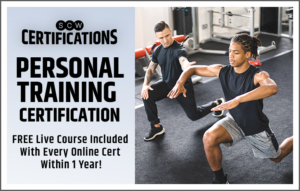
I was thrilled to have the opportunity to audition for the SCW Fitness Idol in February of 2022 as a way to pitch a continuing education course “Intro to MS for Fitness and Wellness Professionals.” To my surprise and honor, I won- you can now call me Emily Reilly, CPT & Fitness Idol Winner!!!
I am truly honored and cannot wait to share with other fitness professionals how to work with the MS community and provide opportunities for more people living with MS to know that they ARE stronger than MS! I look forward to meeting you at future conferences! Please reach out with any questions, I am always happy to connect with those living with MS and those who work with this population.
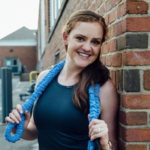 About the Author, Emily Reilly, CPT
About the Author, Emily Reilly, CPT
Emily recently won the title of SCW Fitness Idol at DC MANIA® 2022. She has worked for the National Multiple Sclerosis Society as a Healthcare Provider Engagement Manager since 2019. Emily graduated with a degree in marketing but switched career paths after becoming a military wife in 2011. She is a certified group fitness instructor and personal trainer with over 7 years of experience creating and teaching adaptive fitness classes for those living with multiple sclerosis, like herself. The MS community is near and dear to her heart. Emily’s motto is “No matter what your limitation, you can keep moving!”
Connect with Emily, Linktree (link to all my social media/ contact info), email keepmovingwithemily@gmail.com, or set a time to chat- Click here to schedule a time to connect

Indoor Surfing for the Active Ager
by Hunter Joslin
Ever wonder why surfers and skateboarders have so much balance? Well, there’s no need to take lessons. The answer could be as simple as the INDO BOARD® Balance Trainer. This unique piece of equipment offers benefits for all ages and abilities. It is small enough to use in your home or studio and even take in on the road.
Developed by Hunter Joslin, a passionate lifelong surfer, the original concept was designed in 1975 to train surfers out of the water. The oval deck and roller came to market in 1998 and was quickly successful within the board sports community. It was soon discovered by fitness professionals as a uniquely FUN and functional way to sharpen the ability of our nervous system to react appropriately to training on an unstable foundation.
The INDO BOARD® proved to successfully address the issue of improving Dynamic Balance, which is our ability to integrate the cues coming in from Visual (what we see/where we focus), Vestibular (how our body is oriented in space), and Proprioceptive (changes in the length and tension in our muscles and tendons). The goal is to teach clients how to perform their regular routine on an INDO BOARD® sustaining fast but controlled movements and react to changes in position with perfect posture, poise, and control.
This integral balance training tool for fitness professionals led to the introduction of the IndoFLO cushion, a mouth inflatable balance base. As an alternative form of instability to the traditional cylinder under the board, it provides safe and challenging 360 degrees of unpredictability. The IndoFLO is a dynamic set-up which allows for a fully controllable progression sequence due to the ability to change the difficulty level quickly just by increasing or decreasing the amount of air in the cushion. Clients of all abilities are immediately able to experience the FUNdamental and physical challenge of standing on an unstable surface with confidence they won’t fall.
Balance is a crucial but an under-recognized aspect of good health. Unfortunately, as we age, the loss of muscle strength, mental focus, and other factors, increases the risk of falling. One of every four adults aged 65 and older in the US reports falling each year. The good news is balance is a skill that can be improved.
“We all fall… it’s how we land that makes the difference.” – RE Guenther INDO BOARD Master Trainer
According to the World Health Organization, falls are the second leading cause of unintended deaths worldwide (estimated 684,000). Adults over 60 suffer the greatest number of fatal falls.
Statistics show 37.3 million falls each year are severe enough to require medical attention.
The University of Vermont suggests regular movement, drinking water, taking short walks, and the use of a cane or walking stick to improve balance. The Centers for Disease Control has similar recommendations and a list of exercises. As these are well intended suggestions and maybe okay for some people… We believe there is a better solution! After all, most Baby Boomers grew up with the Rolling Stones singing “I Can’t Get No Satisfaction.” This Boomer generation is profoundly different in that many of them don’t want to take it easy and chill with so many activities available for fun and enjoyment. Keep in mind the basic element of almost every activity endeavor is BALANCE!
We are excited to introduce INDO BOARD® for Active Agers at SCW Florida MANIA®, May 20-22 at the Caribe Royale Orlando. This workshop, #1 balance program in the U.S., was developed by Robert Guenther and his wife Kim, who have been teaching INDO BOARD® Balance Training over the course of 10 years, working primarily with clients 50 and older. They are highly motivated by the genuine success of their program, exceeding beyond all expectations, and inspired to spread their methodology to Fitness Professionals. Their approach is unique focusing on the attention to the importance of understanding the mental aspects along with the physical act of balance training. The outcome is their ability to produce remarkable results along with broad smiles to their clients.
“According to numerous medical organizations you can improve balance, even into your 80’s while bones and muscles may lose mass. By reconnecting mind and body sensors, or changing a thought process, we challenge our clients to a safe and extreme level of balance using a process with Indo Boards that have helped hundreds of men and women experience such a high level of athletic balance control they would never experience in everyday life,” says Robert Guenther. 
Clients can be coached in a private or group setting. By inserting various cues to guide them to disconnecting from life’s concerns, it allows the mind and body to sense the feeling of freedom to move with correct posture and balance control. These changes can occur within-in minutes by shutting out your surroundings, improving your physical being and the residual effects to your brain after a “ride” on the INDO BOARD® is the incentive to learn and push the limits.
We invite you to come and check out our FUN and FUNctional approach to fitness thru balance training with the INDO BOARD®!
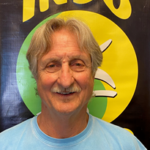 About the Author, Hunter Joslin
About the Author, Hunter Joslin
Hunter Joslin designed and developed the INDO BOARD® Balance Trainer starting in 1975, eventually bringing the product to market in 1998. Board sports have dominated his life for over 55 years, leading to his induction into the Florida Skateboarding Hall of Fame in 2002 and the East Coast Surfing Hall of Fame in 2016. INDO BOARDS are currently used worldwide by coaches and trainers as a Functional Fitness tool across the broad spectrum of all sports. For more information about INDO BOARD® visit the website at www.indoboard.com or contact Hunter at hunter@indoboard.com, (321) 777-6021.

Lunging for Life
by Sue Grant
Strengthening the lower body is crucial for fall prevention and longevity of life, not to mention simply being able to do the things we want to do in everyday life. Walking, running, and weightlifting are excellent sources to gaining leg strength, but they aren’t necessarily the most useful. A lunge is considered one of the most functional strength training exercises ever developed.
This article breakdowns lunges and how to enable them for daily activities. You’ll learn how to make your movements even more functional by practicing them in all three planes of motion.
Almost every move we make is multi-directional. We reach, push, pull, and twist in almost everything we do without even thinking about it. Moving in all three planes of motion during the day – forward and backward, side to side, and rotating just makes sense. However, traditional “old school” exercises are often done in only one plane of motion – forward/back, or sometimes side to side, while neglecting the all-important rotational plane. If you are practicing rotating in a safe environment when you are exercising, your body will be accustomed to these twisting movements that you inevitably do without even realizing.
(Note – if you have severe osteoporosis or your doctor has told you to never rotate or twist, then you obviously need to follow your doctor’s instructions.)
LUNGE CHALLENGES:
To increase the intensity of multi-planar lunges just step further or bend your knees more. Be aware of sensitivity in your knees and take precautions with distance or flexion. To help with balance, stand next to a wall, table, or sturdy chair. Having that additional point of contact will help you focus on the exercise without having to worry about stabilization. When performing front or back lunges, imagine that you are on wide railroad tracks, instead of on a tightrope to help with balance.
3-D Lunges
Forward/Back (Sagittal Plane)
Imagine you are standing in the middle of a clock face (an old-fashioned clock – not digital!) Start with feet about hip width apart, lunge your right leg front to 12 o’clock and return to center. Next, lunge your right leg back to 6 o’clock and return.
(Repeat everything on the other leg.)
Side/Side (Frontal Plane)
Lunge your right leg to 3 o’clock, with your foot pointing forward, and return to center.
(Repeat everything on the other leg.)
Rotating (Transverse Plane)
Lunge your right leg to 3 o’clock but turn your foot so it’s pointing towards the side wall on your right and return to center.
(Repeat everything on the other leg.)
To make these 3-D lunges even more beneficial, try leaning forward as your leg lunges out, putting your hands on either side of your knee. This will activate your gluteal muscles, which are crucial for function and fall prevention. Your glutes are your knee’s best friend – the stronger the muscles are around your knees, the healthier your knees will be.
To activate the buttocks even more in the front lunge, try reaching with your left hand past the right knee as your right foot goes forward. This will internally rotate your right hip, which really turns on your right glute. This internal hip rotation is essential for function in gait.
“Pivot” or “Floating” lunge variation:
(I recommend that you stand next to a solid chair or counter for these lunges, so you don’t have to worry about your balance.)
Step your right foot to 12 o’clock and hold for two seconds, and then immediately step your right foot back to 6 o’clock holding the rear lunge for two seconds. If you repeat these pivot lunges with your right leg lunging forward and back, you’ll really strengthen your left leg.
If you feel steady, you can try reaching your front hand to the outside of the front knee each time to turn work the backside even more.
You can increase the challenge even more with these pivot lunges by holding weights (but only if you feel totally balanced) and swing your bent arms like they move in gait (right arm forward when the left leg is forward, and vice versa.)
Just a little lunge humor!
I encourage you to practice these variations of 3-D lunges two or three times a week – you’ll LOVE how much stronger your lower body muscles will get and how much more confidence you will have when walking, balancing, and just enjoying life!
 About the Author, Sue Grant
About the Author, Sue Grant
Sue Grant is a Fellow of Applied Functional Science through the Gray Institute and a certified Master Instructor for FallProof. She created nine exercise DVDs for her Older Wiser Workout series and is the founder of Fit Tips For Pros, an online library filled with innovative exercise ideas for instructors who teach older adults. Sue has presented live and remote workshops and webinars for IDEA, ICAA, SCW, The Functional Aging Institute, The Gray Institute, The Center For Successful Aging, San Diego YMCA Fitness Palooza, and the Rancho La Puerta fitness resort. In addition to in-home personal training and teaching group classes, she filmed eleven classes for Spiro 100, which streams fitness classes to residents in retirement homes.

Words Matter! What Is An Eating Disorder Dialogue
by Christine Conti, MEd
“You look great!”
How many times have you said this to a client or someone that you not have seen in a while? My guess is that you may have innocently used this saying thousands of times throughout your life. Am I right? However, did you know that these three words, can have a tremendously negative effect on a person who is currently battling or recovering from an eating disorder?
While your intent may have been positive, the impact of these words can be extremely harmful when it comes to the eating disorder recovery process. In fact, the words that you choose may either help to trigger or heal disordered eating behaviors. As a result, it is important for EVERY fitness professional to not only educate themselves about eating disorders, but also to educate themselves about how to best communicate with this very common, but oftentimes overlooked, demographic.
In the United States alone, approximately 30 million people struggle with eating disorders, and at least one person dies from an eating disorder every 52 minutes. In addition, eating disorders can affect anyone, regardless of gender identity, age, ethnicity, or body size.
As a fitness professional, it is imperative to familiarize yourself with the most common eating disorders as well as their signs and symptoms to best support your client. The National Eating Disorders Association website proves a clear and concise overview.
It is also important to realize, that even if a person does not meet the criteria for a diagnosable eating disorder, disordered relationships with food and the body are more common amongst “fit” people than amongst the general population. As fitness professionals it is our responsibility to do whatever we can to improve our clients overall health and wellness- and watering these seeds of disordered behaviors does exactly the opposite.
“Sticks and stones may break my bones, but words will never hurt me.”
This popular idiom could not be further from the truth when it comes to best supporting clients struggling with or recovering from an eating disorder. In fact, words can be extremely harmful and may encourage disordered eating behaviors such as fasting, binging and purging, overexercising, restriction of food groups and more. Therefore, while you may have the best of intentions when telling someone, “You look great!” the way that it is interpreted to someone struggling to overcome an eating disorder may be something like this.
- “I look great NOW because I lost weight by starving myself throughout the day!”
- “I look great NOW because I used to be told that I looked too thin, so I must be fat.”
- “I look great NOW after cutting out ALL meat, dairy, salt, and sugar from my diet and refusing to eat any food I haven’t weighed. I should try to cut out even more foods.”
- “I look great NOW because I spend 4 hours each day exercising to burn off everything I ate and am planning to eat in the future.”
- “I look great NOW and I love attention I am getting after starting to binge and purge after my meals to avoid feeling full and gain control over my weight.”
As you see, telling someone, “You look great,” may have a much greater impact than you realize. The client with an eating disorder is already struggling with their body image, self-control, self-confidence, and much more. By commenting about appearance, YOU are essentially passing judgement and verbally expressing your approval about their appearance.
What is the role of the fitness professional?
In order to best serve a client struggling with an eating disorder, the fitness professional must become hyper vigilant when it comes to their word choice. Being able to recognize appropriate communication methods will not only improve client-trainer relationships, but also serve to aid in the healing process. Here are some suggestions:
- When giving praise or compliments, focus on form or exercise execution. For example, “I am so impressed by the progress you have made on your squat”.
- When a new client walks in for an evaluation, do not assume that they are there to lose weight or change their appearance. Unless they mention weight or size as a part of their goal, there is no need to weigh or measure your client. Instead of asking “What do you want to change about yourself?”, try asking “How would you like your body to perform better?”
- When a client tells you that they need to work “extra hard” to get rid of the food they ate last night, don’t engage in that type of negating dialog. Either tell them that they do not need to punish themselves for enjoying a meal or, if you are ready to have a deeper conversation, ask them why they feel like they need to “get rid of” the food.

Remember that your role as a fitness professional is to teach and correct movement. Try to stay in that lane as much as you can. If your client needs guidance with nutrition, have a list of registered dieticians that you can refer them to. If you feel someone is suffering from an eating disorder or disordered eating behaviors, be prepared to offer them resources. Let them know that you are there to listen and support, but remember that you are not a therapist or nutritionist.
For more information about eating disorders and resources in your area, visit the NEDA website at www.nationaleatingdisorders.org
 About the Author, Christine Conti, MEd
About the Author, Christine Conti, MEd
Christine Conti, M.Ed. is an eating disorder survivor and author of the MFN Arthritis Fitness Specialist, the MFN Eating Disorders: What Fitness Professionals Need to Know and the Orthopedic Fitness Specialist Courses. She wrote the SCW Chronic Disease Fitness Course, FallPROOFTM Fall Prevention and Let’s FACE It TogetherTM facial exercise programs. She is the best-selling author of SPLIT-SECOND COURAGE and hosts the Two Fit Crazies and a Micrphone Podcast.
 We’re always looking for great content highlighting the newest things in the world of fitness. Please submit your article directly to editor@scwfit.com for immediate consideration!
We’re always looking for great content highlighting the newest things in the world of fitness. Please submit your article directly to editor@scwfit.com for immediate consideration! Spotlite, April 9, 2025
Spotlite, January 5, 2025
Spotlite, November 11, 2024
Spotlite, September 27, 2024
Spotlite, August 31, 2024
Spotlite, July 26, 2024
Spotlite, June 22, 2024
Spotlite, May 23, 2024
Spotlite, April 26, 2024
Spotlite, March 22, 2024
Spotlite, February 19, 2024
Spotlite, January 20, 2024
Spotlite, December 21, 2023
Spotlite, November 18, 2023
Spotlite, October 22, 2023
Spotlite, September 21, 2023
Spotlite, August 19, 2023
Spotlite, July 19, 2023
Spotlite, June 19, 2023
Spotlite, May 18, 2023
Spotlite, April 21, 2023
Spotlite, March 28, 2023
Spotlite, February 18, 2023
Spotlite, January 21, 2023
Spotlite, December 16, 2022
Spotlite, November 19, 2022
Spotlite, October 22, 2022
Spotlite, September 24, 2022
Spotlite, August 23, 2022
Spotlite, July 22, 2022
Spotlite, June 20, 2022
Spotlite, May 18, 2022
Spotlite, April 20, 2022
Spotlite, March 25, 2022
Spotlite, February 17, 2022
Spotlite, January 14, 2022
Spotlite, December 17, 2021
Spotlite, November 18, 2021
Spotlite, October 25, 2021
Spotlite, September 16, 2021
Spotlite, August 9, 2021
Spotlite, July 10, 2021
Spotlite, June 8, 2021
Spotlite, May 14, 2021
Spotlite, April 30, 2021
Spotlite, March 30, 2021
Spotlite, February 23, 2021
Spotlite, January 20, 2021
Hyatt Regency Dulles
Herndon, VA
Hyatt Regency SF Airport
Burlingame, CA
Caribe Royale Orlando
Orlando, FL
May 1-4, 2025
May 2026
Grand Hyatt Atlanta Buckhead
Atlanta, GA
July 24-27, 2025
July 2026
Westin Galleria Dallas
Dallas, TX
August 21-24, 2025
August 28-30 2026
Rosemont Chicago O’Hare
Rosemont, IL
Oct. 2-5, 2025
Oct. 2-4 2026
Doubletree by Hilton
Danvers, MA
Nov. 13-16, 2025
Nov. 13-15, 2026

